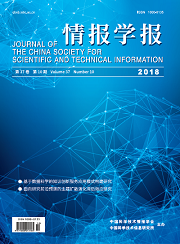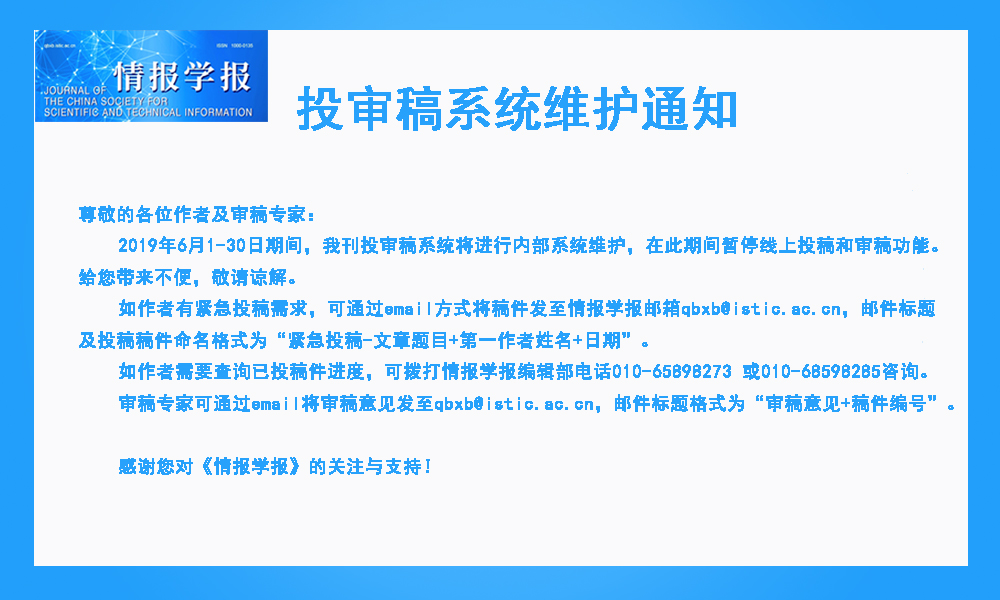 |
|
|
|
|
|
|
|
|
971 |
Research on the Application Model of Knowledge Innovation Service Based on Data Science |
|
 |
Cao Jiajun, Wang Yuefen |
|
|
DOI: 10.3772/j.issn.1000-0135.2018.10.001 |
|
|
In the era of big data, knowledge demand has changed. The existing knowledge service model is not feasible for the development of knowledge innovation and for the transformation of data-intensive scientific research paradigms. Therefore, it is necessary to establish an application pattern facing knowledge innovation by introducing data science. Through summarizing knowledge innovation, knowledge service, and data science, this research explores the concept and characteristics of knowledge innovation service and the aim of introducing data science. Additionally, it analyzes the current situation in knowledge innovation service model research. Further, it presents the aim and the demand of knowledge innovation service model; and finally, it tries to build an application pattern of knowledge innovation service based on data science. The research considers that the application pattern of knowledge innovation service based on data science consists of three layers: database layer, analysis logic layer, and result presentation layer. Based on knowledge content analysis, knowledge innovation model, and other angles, this paper expounds the service model of knowledge innovation from four different perspectives. |
|
|
2018 Vol. 37 (10): 971-978
[Abstract]
(
338
)
HTML
(1 KB)
PDF
(544 KB)
(
971
) |
|
|
|
979 |
Research on Lagging Effect of Topic Diffusion Evolution Face to Prediction of Research Front |
|
 |
Liu Ziqiang, Xu Haiyun, Yue Lixin, Fang Shu |
|
|
DOI: 10.3772/j.issn.1000-0135.2018.10.002 |
|
|
There is a lag in the diffusion of topics from fund projects and papers. Exploring the lag effect of the diffusion and evolution of research topics in fund projects and papers will be helpful to the front topic recognition research of multi-source data fusion. First, LDA (latent Dirichlet allocation) model is used to identify research topics contained in fund projects and paper texts, and similarity is used to construct the association between topics; then, the research front topics are detected by the degree of emergence and attention index of the topics, so as to identify the important research front topics. Further, using the autoregressive distribution lag model and the visualization method of topic diffusion evolution path, this paper analyzes the diffusion lag effect of fund projects and academic papers from the perspectives of external quantitative characteristics and internal topic characteristics. A case study was carried out on the fund project and papers data in the field of artificial intelligence (AI) in 2000-2017 in the US. The results showed that the topics in the fund projects and the papers were obviously lagging. The late stagnation for the topics in the fund projects was two years (2.027888 lag phase relation), and when the lag period is over three years, its influence gradually decreases. |
|
|
2018 Vol. 37 (10): 979-988
[Abstract]
(
300
)
HTML
(1 KB)
PDF
(1862 KB)
(
1003
) |
|
|
|
989 |
Study on the Themes Evolution Relation between Sleeping Beauty Papers and the Field Papers: Taking the Field of Information Security Technology as an Example |
|
 |
Wang Haiyan, Ma Zheng, Gao Jiping, Zhai Lihua, Pan Yuntao, Wu Yishan |
|
|
DOI: 10.3772/j.issn.1000-0135.2018.10.003 |
|
|
Using the field of information security technology as an example the Themes distribution, the occurrence time, and research content of 14265 field papers (“Sleeping Beauty”, uncited, and highly cited papers) published between 1995 and 2004 were studied. The research shows that the distribution of themes of the Sleeping Beauty papers in the field of information security technology is different from that of the other two kinds of literature, and the occurrence time is earlier than that of the same theme time. Regarding advanced content, the research content of Sleeping Beauty theses is earlier than the other two types of paper with the same theme. |
|
|
2018 Vol. 37 (10): 989-996
[Abstract]
(
265
)
HTML
(1 KB)
PDF
(528 KB)
(
770
) |
|
|
|
997 |
Research on the Structure Recognition of Academic Texts Under Different Characteristics |
|
 |
Wang Dongbo, Gao Ruiqing, Ye Wenhao, Zhou Xin, Zhu Danhao |
|
|
DOI: 10.3772/j.issn.1000-0135.2018.10.004 |
|
|
With the emergence of a large number of full-text scientific theses, the process of extracting the useful information in these volumes is not only beneficial to knowledge-based organizations but is also useful for the accurate retrieval of academic literature. The recognition of the structure of academic text is the basis for this investigation because structure recognition is helpful in the comprehension of these documents from the perspective of depth and semantic, to promote research into academic text mining. This paper examines different structural functions of academic texts as research objects, and considers 1579 papers from the Journal of the Association for Information Science and Technology as the dataset, and compares three types of models, namely bidirectional long short-term memory neural network, support vector machine, and conditional random fields, and the conditional random field determined to be used in the following exploration. Based on this approach, the problem of functional structure recognition of academic texts was transformed to identify the sequence of sentence units. Finally, the best model was obtained for an F-measure of 92.88% for the average of the open test, and the effect of different features on the structure recognition problem was explored. The experimental results showed that the lexical information in the chapter titles and the feature words in the chapters play an important role in academic text functional structure recognition, and satisfactory results were produced. However, the length of the structure affected the conditional random fields method. The causes of the errors associated with the identification of academic texts are summarized, in addition to the identification of the limitations and plans for further studies. |
|
|
2018 Vol. 37 (10): 997-1008
[Abstract]
(
283
)
HTML
(1 KB)
PDF
(787 KB)
(
1061
) |
|
|
|
1009 |
Structure, Behavior and Evolvement of Information Communication Network of WeChat Groups: Based on Conversation Analysis Perspective |
|
 |
Ba Zhichao, Li Gang, Mao Jin, Xu Jian |
|
|
DOI: 10.3772/j.issn.1000-0135.2018.10.005 |
|
|
The WeChat group has a complex conversational structure, involving different networking groups, user behaviors, and interactive modes, and it is extremely important to understand the information behaviors of WeChat users and communication relationships to reveal and grasp the network structure, behavior characteristics, and evolution law of information communication in a WeChat group. Based on the network community and conversational analysis theory, this paper applies social network analysis and content analysis methods to explore the network topology, user characteristics distribution, information interactivity types, and evolution law of WeChat groups with different target requirements. The results show that the sources of different types of WeChat groups have a strong aggregation, and some members basically dominate the exchange of information, which makes the user generated content (UGC) highly imbalanced. The enthusiasm of group members to participate in WeChat group chats is a decisive factor in group message distribution. Information communication in a WeChat group is “limited” and “fragmented” in nature without complete text meaning, and the conversation structure possesses an “infinite drift” or “infinite flow” nature. The expression of ideas in WeChat groups exhibits a “Spiral of Silence” phenomenon, which is influenced by group pressure, familiarity, and trust between group members. The whole session process of WeChat groups is composed of topic continuity, transfer, transformation, and reversal, in the same topic, the process also includes start, maintenance, silence, and end of the life cycle. |
|
|
2018 Vol. 37 (10): 1009-1021
[Abstract]
(
398
)
HTML
(1 KB)
PDF
(1098 KB)
(
1632
) |
|
|
|
1046 |
Mobile Experience Sampling Method: Facilitating Human Information Behavior Research in the Real Context |
|
 |
Hu Rong, Tang Zhengui, Zhao Yuxiang, Zhu Qinghua |
|
|
DOI: 10.3772/j.issn.1000-0135.2018.10.008 |
|
|
In the era of mobile Internet, the contents and boundaries of the information worlds of individuals have experienced an unprecedented expansion. Information behavior is experiencing an evolution. From a methodological point-of-view, researchers in the field of information behavior now seek a breakthrough in the research paradigm and are attempting to realize the two-layer top-down transformation of thinking tools and practical tools. First, based on the theory of information worlds of individuals. This paper discusses the transformation of five thinking tools, namely, mobile thinking, daily thinking, context thinking, longitudinal thing, and the individual thinking tool. Second, the mobile experience sampling method (mESM) on the practical tool level is introduced. We then clarify the origin, development, and the characteristics of the method. Then, its strict execution framework is systematically analyzed, and the mESM innovations and the representative tools of mESM are explored, and its application in the study of user information behavior is discussed. Finally, we discuss the method tension, tool stickiness, the mESM’s multi-source data acquisition support capability in behavioral computing, and also the application domain, method value, and application challenge of mESM. Considering that mESM tools are scarce, we advocate that the researchers in the field of information behavior should focus on the localization of mESM tools, and strive to more effectively support and promote user information behavior exploration in mobile Internet environment. |
|
|
2018 Vol. 37 (10): 1046-1059
[Abstract]
(
343
)
HTML
(1 KB)
PDF
(1186 KB)
(
1288
) |
|
|
|


